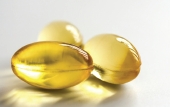Diseases of the heart are still the leading cause of death in the United States, according to the latest preliminary data from the Centers for Disease Control and Prevention (cancer in all its forms remains a close second) (1). Due to this ongoing reality, cardiovascular health is of special concern to health-conscious individuals, especially those battling known risk factors.
As we focus in on heart health and the heart health supplements market specifically, it’s clear supplement makers are being influenced by a risk factor-centric approach to heart health. But, not all agree on which approach is best. We’ll also look at up-and-coming heart health ingredients alongside new evidence for already popular options.
Risk/Reward
Lower your cholesterol, stave off a heart attack: this is the type of message on cardiovascular wellness most people are receiving today. They may also hear about exercise and diet, but when it comes to major interventions, the focus is squarely on specific risk factors. Much of this trend is driven by the pharmaceutical approach, but it is also felt in the supplements market.
Herb Joiner-Bey, N.D., scientific advisor to Barlean’s, Ferndale, WA, acknowledges the importance of dealing with the major heart health risk factors. “However, the tendency of certain talk show hosts and ill-informed consumers is to adhere to a quick-fix mindset about these issues and to search endlessly for the latest magic supplement du jour,” he says. Joiner-Bey attributes the rise in cardiovascular disease over the last century to the departure from eating diverse nutrient-dense, whole, organic plant and animal foods, not to the lack of any one nutrient.
Because it is such a multi-faceted system, there 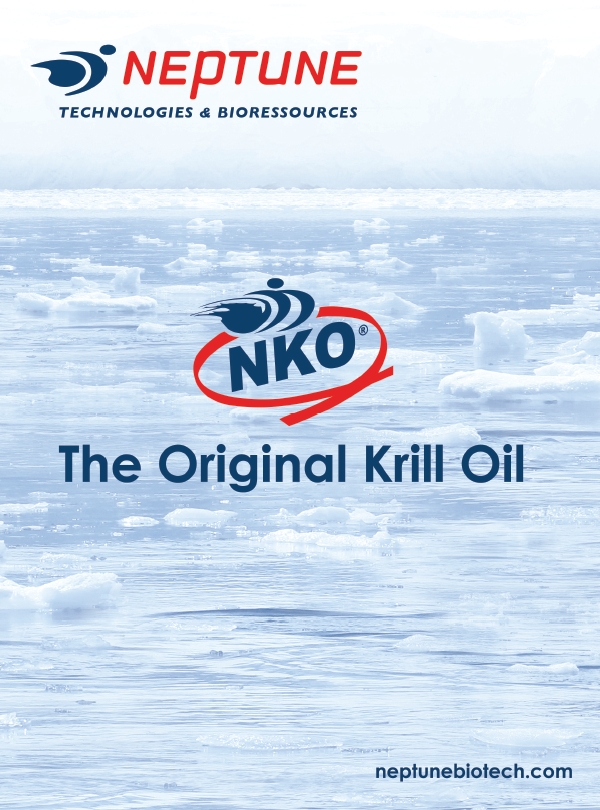 is no magic bullet for cardiovascular health, according to Trisha Sugarek MacDonald, B.S., M.S., director of R&D and national educator for Bluebonnet Nutrition Corp., Sugar Land, TX. However, a lot can be done to protect the cardiovascular system through lifestyle modification, she says. A laundry list of the risk factors associated with heart health, according to Sugarek MacDonald, includes age, gender, diet, physical activity level, smoking, alcohol consumption, weight/BMI score, abdominal obesity, blood lipid levels (cholesterol, triglycerides and phospholipids), lipoprotein profiles (VLDL, LDL, IDL, HDL, chylomicrons), blood pressure, homocysteine levels and genetic factors.
is no magic bullet for cardiovascular health, according to Trisha Sugarek MacDonald, B.S., M.S., director of R&D and national educator for Bluebonnet Nutrition Corp., Sugar Land, TX. However, a lot can be done to protect the cardiovascular system through lifestyle modification, she says. A laundry list of the risk factors associated with heart health, according to Sugarek MacDonald, includes age, gender, diet, physical activity level, smoking, alcohol consumption, weight/BMI score, abdominal obesity, blood lipid levels (cholesterol, triglycerides and phospholipids), lipoprotein profiles (VLDL, LDL, IDL, HDL, chylomicrons), blood pressure, homocysteine levels and genetic factors.
Interventions aimed at dramatically improving risk factors are the domain of pharmaceuticals, says Eric Anderson, global vice president of sales and marketing at NattoPharma USA Inc., Metuchen, NJ. But he says a similar trend is taking place in supplements, as certain compounds are being marketed for supporting specific risk factors, like phytosterols for cholesterol support. Jolie Root, LPN, LNC, nutritionist and educator for Carlson Laboratories, Arlington Heights, IL, feels pharmaceuticals are influencing consumer outlook. “The shift reflects a new trend of advertising by the pharmaceutical companies directly addressing specific risk factors rather than ‘heart disease’ in general. As drug ads get risk factor specific, the consumer base becomes more aware,” she says.
To address the nutritional components of these risk factors, Sugarek MacDonald says that consumers are increasingly looking to condition-specific hearth health supplements. These include, she explains, products meant to help address blood pressure, cholesterol, antioxidant levels, prostaglandin (hormone-like compounds that affect inflammation) synthesis and other areas. These stand in contrast to one-a-day formulas aimed at general heart health. Many natural products stores are breaking down their heart health sections into categories like these to allow customers to make choices more easily, Sugarek MacDonald says.
Clinical evidence shows that controlling these main risk factors not only acts preventively, but can also be a powerful tool in the management and treatment of heart disease, according to Mark C. Houston, M.D., M.S., and Andreas M. Papas, Ph.D., on behalf of A.C. Grace Company, Big Sandy, TX. Many of the most important risk factors are related to several broader issues, according to Papas and Houston, including oxidative stress, inflammation and autoimmune vascular disease. Keeping on top of these areas, according to emerging science, significantly reduces risk factors that are easier to quantify, like blood pressure.
A holistic approach to heart health should be recommended in some cases, Anderson says, because of the synergies inherent to nutrition. He gives the example of calcium, and the need to balance its intake with cofactors like magnesium, vitamin D and vitamin K2. Calcium consumption from food and supplements, he notes, has recently been linked to increased cardiovascular risks, likely due to calcium deposits in blood vessel walls. “In contrast, vitamin K2 has been shown to prevent arterial calcification and arterial stiffening, which means increased vitamin K2 amounts in the body could be a means of lowering calcium-associated health risks,” Anderson says. More on the emerging significance of K2 for heart health later.
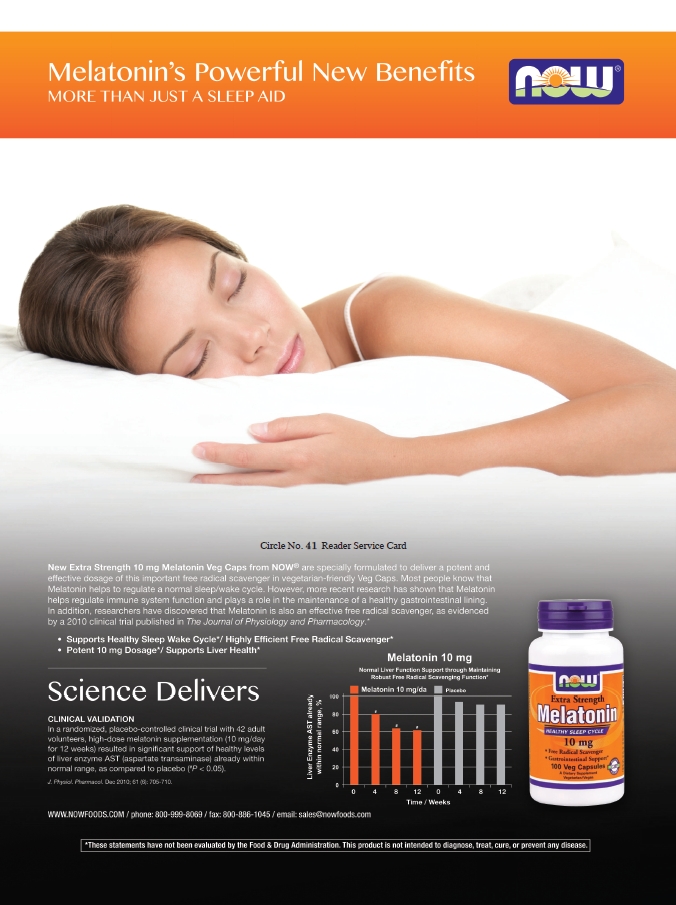 Consumers seeking specific nutrients to target heart health risk factors is nothing new, says Bryan See, regional product manager for Carotech Inc., Edison, NJ. He goes on to say many products are already geared toward this demand. But as consumer interest turns more toward targeted supplements, manufacturers are adjusting their focus, according to Jay Levy, director of sales at Wakunaga of America Co., Ltd., Mission Viejo, CA. “Although there continue to be multi-ingredient products designed to improve overall cardiovascular health, many risk factor-specific supplements are now making their way to market,” he says.
Consumers seeking specific nutrients to target heart health risk factors is nothing new, says Bryan See, regional product manager for Carotech Inc., Edison, NJ. He goes on to say many products are already geared toward this demand. But as consumer interest turns more toward targeted supplements, manufacturers are adjusting their focus, according to Jay Levy, director of sales at Wakunaga of America Co., Ltd., Mission Viejo, CA. “Although there continue to be multi-ingredient products designed to improve overall cardiovascular health, many risk factor-specific supplements are now making their way to market,” he says.
Customers should speak to their doctors about which type of supplement may suit their heart health needs, says Susan Hazels Mitmesser, Ph.D., director of nutrition research at Solgar, Leonia, NJ. “Some medical professionals may recommend only one addition, such as fish oil, while others may recommend more. Every individual is different and should be treated as such,” she says.
The basis for the demand and formulation of these products is research. “The role of nutrition in overall health is still in its infancy. Further research will continue to elucidate the specific role of nutrients with regards to heart health,” says Hazels Mitmesser.
In the heart health arena, many supplements are being pushed to the forefront by research showing benefits for everything from blood pressure to cholesterol to triglycerides, says Becky Wright, communications and marketing manager at Aker BioMarine Antarctic US, Issaquah, WA. She says the shift in emphasis from general heart health to more specific claims is necessary because it gives consumers more helpful information about their heart health concerns. It is also a way, she adds, for brands that have substantiated health benefits to differentiate themselves.
“The more you can differentiate heart health claims, the easier it is to communicate the benefits to consumers,” says Steve Holtby, president and CEO of Soft Gel Technologies, Inc., Los Angeles, CA. He argues that “supports heart health” is a claim that is still functional in the marketplace, but “supports healthy blood pressure” and the like send a more powerful message.
Holtby cites the science behind antioxidants as an example, saying it has not been easy to educate consumers on the subject. It requires an understanding of complex cellular biochemistry and physiology, so marketers have offered the core message that antioxidants help protect the body against oxidative damage caused by free radicals.
Making these connections is key in getting 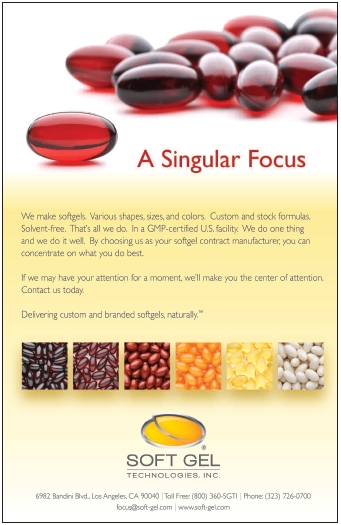 consumers engaged with their own heart health. “It is often easier for the typical consumer to relate to specific risk factors affecting heart health than to general lifestyle advice such as cutting down on red meat and exercising more,” says Neil E. Levin, nutrition education manager for NOW Foods, Bloomingdale, IL. But, he also notes it is easier for physicians to approach these targeted interventions through pharmaceutical drugs and aspirin than to guide patients towards nutrition.
consumers engaged with their own heart health. “It is often easier for the typical consumer to relate to specific risk factors affecting heart health than to general lifestyle advice such as cutting down on red meat and exercising more,” says Neil E. Levin, nutrition education manager for NOW Foods, Bloomingdale, IL. But, he also notes it is easier for physicians to approach these targeted interventions through pharmaceutical drugs and aspirin than to guide patients towards nutrition.
There is no doubting that much is left out of the picture by the risk model used by the medical community. Levin explains that sudden death from cardiac causes accounts for the majority of coronary artery disease deaths, and that most such deaths are of people who weren’t considered high risk. According to a study Levin cites, up to 55% of men and 68% of women who suffer sudden cardiac death have no clinically recognized heart disease beforehand (2).
Kenn Israel, vice president of marketing for Robinson Pharma, Santa Ana, CA, has looked at the role FDA and FTC have in shaping how supplements can be marketed in the United States. He believes it’s clear that the natural products industry has the right and responsibility to help individuals support optimal health and normal function, but that we are not in the disease treatment business. He says elevated blood pressure is a disease state, so marketers must tread carefully, and he notes that cholesterol’s status as a risk factor is even being questioned in many quarters.
These qualms aside, Israel recognizes that the general public is motivated by these risk factors when they walk into health food stores looking to support their cardiovascular health. But the holistic approach should still be given due credence. “If we look at how we can maintain optimal function of these systems in the body, it might be a safer, better path,” Israel says.
There are other reasons to be wary of focusing too much on individual risk factors in the supplements space, including the fact that it can be a hard sell. “Although targeting specific risk factors as opposed to general prevention is a great concept and might certainly be the trend in the industry, in my opinion this type of approach will always be very challenging in the marketplace,” says Wael Massrieh, Ph.D., vice president of scientific affairs at Neptune Technologies & Bioressources Inc., Laval, QC, Canada. He attributes this difficulty to the need for scientific support, showing significant positive outcomes on healthy populations, to allow for claims to be made from a regulatory perspective.
What’s Now, What’s Next
There are relatively trending options in the heart health supplements space to speak of. One example is nattokinase, according to Levy. An enzyme found in fermented soybeans, it has garnered attention in recent years for its ACE-inhibitor-like activity. In a trial on borderline hypertensive individuals, South Korean researchers found that nattokinase reduced systolic blood pressure by an average of 5.55 mmHg, and diastolic blood pressure by an average of 2.84 mmHg after eight weeks (3). Other preliminary evidence suggests that nattokinase can improve blood viscosity and reduce blood clot risk, according to Levy.
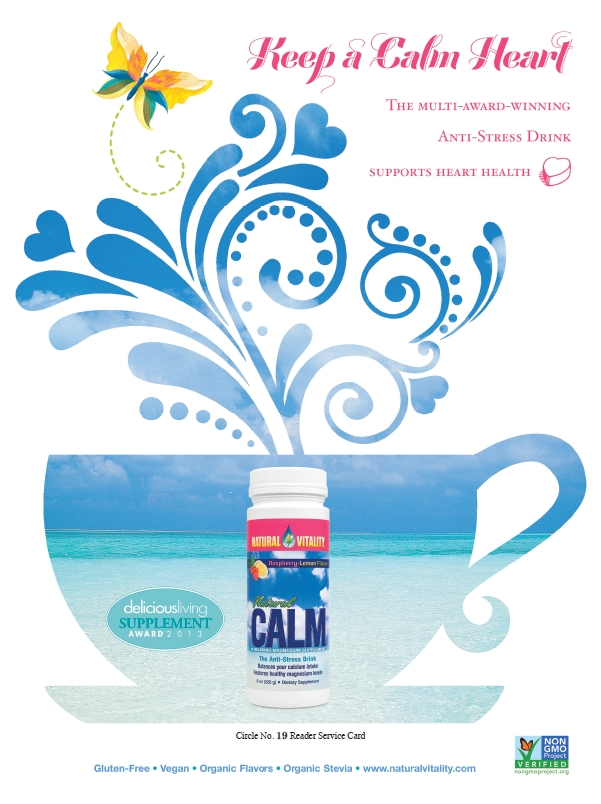 Research also seems ready to elevate a few more nutrients toward the lofty status held by the likes of omega-3s and CoQ10. A prime candidate is vitamin K2, explains Israel. He thinks vitamin K2 and its various forms, called menaquinones, have the opportunity to be the next vitamin D or omega-3 for heart health, if the industry promotes it correctly.
Research also seems ready to elevate a few more nutrients toward the lofty status held by the likes of omega-3s and CoQ10. A prime candidate is vitamin K2, explains Israel. He thinks vitamin K2 and its various forms, called menaquinones, have the opportunity to be the next vitamin D or omega-3 for heart health, if the industry promotes it correctly.
He thinks this will be accomplished with the aid of recent research like the Rotterdam study, which found a correlation between a lack of dietary K2 and cardiovascular disease (4). Israel predicts increased publication of existing and new data on K2 for 2014, including clinical trials on its interactions with calcium in the cardiovascular system, nitric oxide (NO) production and energy production.
“Calcium management is probably the biggest of those. I think one could potentially make an argument that atherosclerotic plaque formation may be a deficiency disease,” he says. Populations with adequate or high levels of menaquinone intake don’t typically have calcium-dense fatty deposits in their blood vessels that cause them to narrow and lose flexibility, says Israel.
Anderson agrees on the potential of vitamin K2, and goes into detail about the supporting research. “Vitamin K2 as menaquinone-7 has a very bright future in cardiovascular health,” he says. Though it has long been tied to bone health, K2’s cardiovascular uses are coming through in research, including a recent study on 244 healthy postmenopausal women presented at Vitafoods 2012 in Geneva. Those that supplemented with vitamin K2 (as MK-7 from NattoPharma) showed significant improvement in cardiovascular health as measured by ultrasound and pulse-wave velocity. Blood vessels dilation also improved over a three-year period compared to the placebo group.
The understanding of vascular calcification has advanced, Anderson explains, so that now vitamin K-dependent matrix GLA protein (MGP) is recognized as a strong inhibitor of this damaging process. Dialysis patients tend to have high levels of the inactive form of MGP, and a new study tried to determine the dose of vitamin K2 (MK-7) that best activates MGP. Anderson says 200 chronic hemodialysis patients received one of three different doses of the ingredient for eight weeks. It was found to reduce inactive MGP in a dose-dependent fashion, including a 46% drop in the highest dosage group (5).
Another new study cited by Anderson may show vitamin K deficiency to be widespread. Researchers tested 896 blood samples from 110 healthy volunteers (42 children and 68 adults). They found average inactive MGP levels increased in those over 40, suggesting a need to supplement K2 intake with age (6).
A potent antioxidant, vitamin E’s place in the 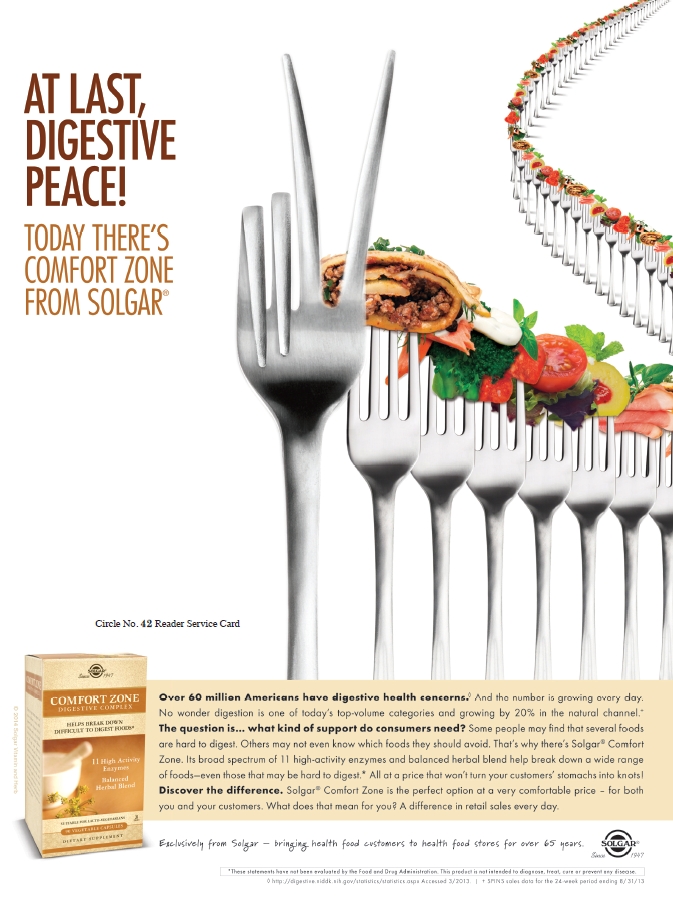 heart health category continues to evolve. Houston and Papas explain that the tocotrienol and tocopherol forms of vitamin E, taken collectively, have strong antioxidant and anti-inflammatory action, with mild blood-thinning effects. They can help reduce cholesterol oxidation, which is responsible for arterial plaque formation. Gamma-tocopherol, specifically, has been found to quench nitrogen radicals that cause inflammation, and tocotrienols help reduce the production of LDL, or “bad cholesterol.”
heart health category continues to evolve. Houston and Papas explain that the tocotrienol and tocopherol forms of vitamin E, taken collectively, have strong antioxidant and anti-inflammatory action, with mild blood-thinning effects. They can help reduce cholesterol oxidation, which is responsible for arterial plaque formation. Gamma-tocopherol, specifically, has been found to quench nitrogen radicals that cause inflammation, and tocotrienols help reduce the production of LDL, or “bad cholesterol.”
One of the reasons vitamin E is belatedly receiving attention for heart health is the move away from its alpha tocopherol form as the primary subject of research. While tocopherols do possess antioxidant value, they lack the cholesterol-regulating ability of tocotrienols due to a slightly different molecular structure, according to an article authored by Anne Trias, M.S., and Barrie Tan, Ph.D. of American River Nutrition, Hadley, MA (7).
Vitamin E molecules look like tadpoles, featuring heads and tails. Tocotrienols have shorter and more flexible tails, say Trias and Tan, allowing them to move more freely through cell membranes for added protection. They write that delta tocotrienol, specifically, has been found to be a potent vitamin E compound in down-regulating expression of COX-2, which plays a role in inflammation.
A proprietary vitamin E ingredient (Tocomin SupraBio from Carotech) contains full-spectrum vitamin E derived from palm fruit oil, according to See. It has been shown to significantly lower cholesterol levels in humans, as well as reduce arterial blockage in carotid stenosis patients. “In other published human studies, bioenhanced full-spectrum tocotrienol complex has also been found to reduce arterial stiffness,” See says.
Plant-based sterols, or phytosterols, aren’t exactly new, says Levin, but they are gaining steam for cholesterol support. Phytosterols block intestinal cholesterol absorption and help lower triglycerides because they have a similar chemical structure to cholesterol. A recent paper in Nutrition saw 28 individuals with high cholesterol take either a phytosterol supplement or placebo, Levin says. A 9.2% reduction in LDL, a 7.4% drop in total cholesterol and a 9.1% reduction in triglycerides was found after six weeks (8).
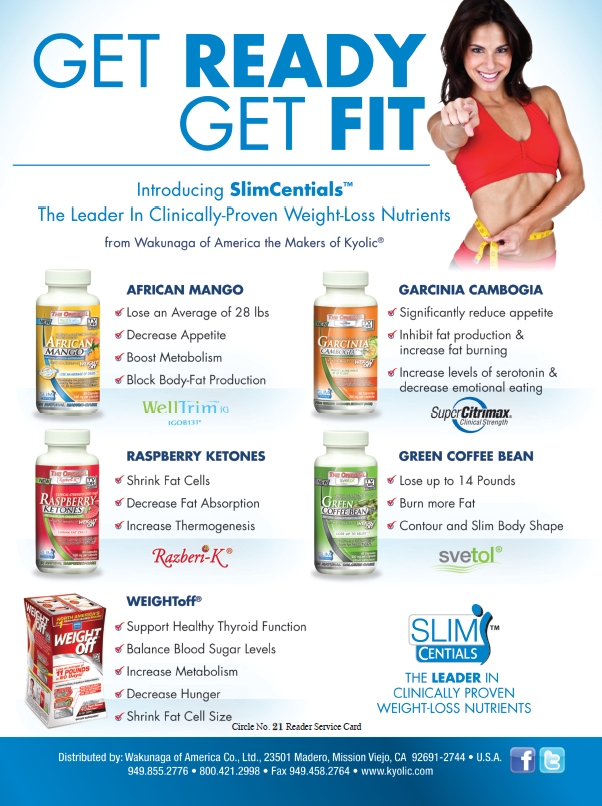 Sugarek MacDonald explains how phytosterols are thought to block cholesterol: “Plant sterols are believed to displace cholesterol from bile salt micelles in the lower region of the small intestine, a prerequisite for uptake of cholesterol.”
Sugarek MacDonald explains how phytosterols are thought to block cholesterol: “Plant sterols are believed to displace cholesterol from bile salt micelles in the lower region of the small intestine, a prerequisite for uptake of cholesterol.”
She goes on to list several other compounds that can help regulate cholesterol: red yeast rice extract, which has an extensive history of use in Chinese medicine; policosanol, a mixture of long-chain alcohols derived from plant wax; and pantethine, a double molecule of pantothenic acid (vitamin B5). Pantethine can stay in the bloodstream for up to 16 hours, supporting both energy and lipid metabolism, according to Sugarek MacDonald. Cholesterol is needed by the body, she reminds us, but too much of it in the blood can lead to buildup on artery walls.
Magnesium has an under-appreciated role in heart health, according to experts. The mineral has been called the body’s natural calcium channel blocker, says Chris D. Meletis, N.D., director of science and research for Trace Minerals Research, Ogden, UT, due to its balancing effect on calcium. He notes calcium’s entrenched place in our nutritional regimens for bone health, thanks to media campaigns like “Got Milk?” “However, magnesium is essential for proper heart contraction, helps with heart rhythm and aids in blood pressure regulation,” Meletis says.
Magnesium ions are involved in the catalytic action of all enzymes that use or synthesize the energy molecule ATP, Meletis adds. Holtby notes this is relevant in that the heart requires a tremendous amount of energy to function properly. He describes it as a key compound for the nervous system, heart and overall circulation.
Seven to eight-hundred enzyme systems are regulated by magnesium, says Carolyn Dean, M.D., N.D., medical advisory board member of the non-profit Nutritional Magnesium Association (www.nutritionalmagnesium.org). These include the relaxation of smooth muscles in blood vessels, which lowers blood pressure; decreasing cholesterol production when cholesterol is elevated; increasing the muscle function of heart ventricles, preventing heart failure; and acting as a natural calcium channel blocker by dissolving excess calcium.
It is great that we continue to discover novel ways to support cardiovascular health, Meletis believes. “But we can’t forget the basics: keeping minerals in balance in the body for proper electrical conductivity, muscle contraction and energy performance,” he says.
There are several other emerging nutrients and 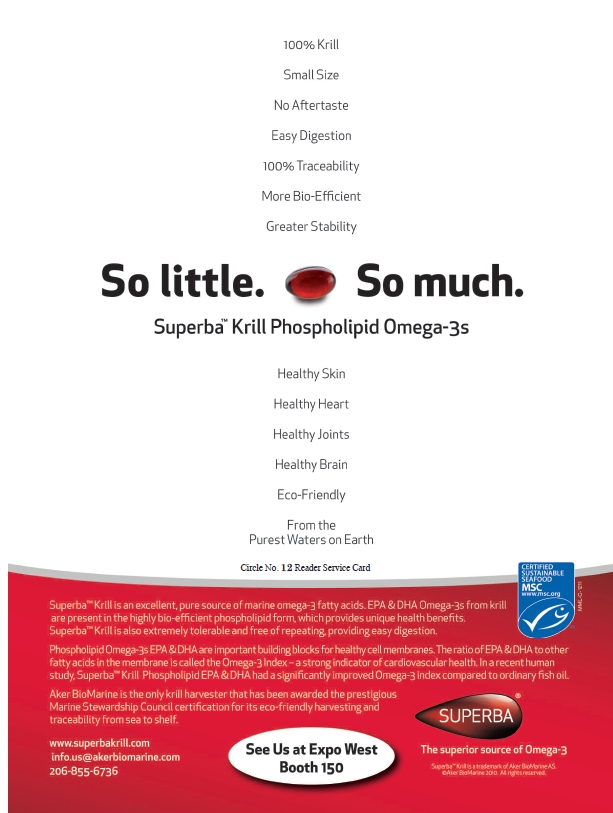 categories of nutrients for heart health. Though they may be somewhat established, and have long been included in heart health products, they will increasingly be recognized on their own individual merit. Houston and Papas say carotenoids like lycopene and astaxanthin are strong antioxidants that can help improve endothelial function (key for blood pressure regulation) and cholesterol profiles, in part through reducing oxidation. Vitamin D3 is anti-inflammatory, they say, and simply stated, supplementing with it prevents deficiency, which is linked with increased heart disease and mortality.
categories of nutrients for heart health. Though they may be somewhat established, and have long been included in heart health products, they will increasingly be recognized on their own individual merit. Houston and Papas say carotenoids like lycopene and astaxanthin are strong antioxidants that can help improve endothelial function (key for blood pressure regulation) and cholesterol profiles, in part through reducing oxidation. Vitamin D3 is anti-inflammatory, they say, and simply stated, supplementing with it prevents deficiency, which is linked with increased heart disease and mortality.
Levin cites a study demonstrating vitamin D’s role in cardiovascular health. It involved 74,272 women and 44,592 men free of heart disease and cancer at baseline, who were followed up with 12 years later. Men who had vitamin D intakes of at least 600 IU per day had a 16% lower heart disease risk than men whose intake was less than 100 IU per day (9).
Joiner-Bey adds medium-chain triglycerides from coconut oil and olive leaf to the heart health roll call, and Israel notes that omega-7s are also up-and-coming for their antioxidant potential.
Israel says people fully recognize the important heart health benefits of omega-3s, especially high-potency EPA supplements, as well as CoQ10. Wright shares some recent support for omega-3s in the form of krill oil. “The largest clinical trial on krill to date was published in the January 2014 issue of Nutrition Research,” she says. It investigated the effects of a proprietary ingredient (Superba Krill from Aker) on blood lipids in people with borderline or high triglycerides. Subjects administered the krill oil had a statistically significant reduction in serum triglycerides of 10.3%, relative to placebo (10).
The overall foundation for the heart health benefits of omega-3s only continues to strengthen. Root refers us to a recent meta-analysis of cohort studies and randomized controlled trials on omega-3s that included hundreds of thousands of subjects (11). Consuming 250 mg per day of omega-3s was associated with a 36% diminished relative risk of cardiac death.
The primary function of CoQ10, says Massrieh, is generating energy within cells. It is a key element of the electron transport chain and is part of aerobic respiration. One way it helps the heart is by supplying energy so that blood can be pumped throughout the entire body, he explains. Massrieh says his company has combined krill oil with CoQ10 and B vitamins to target heart health and circulation. This was the result of an R&D process to search the scientific literature for ideal partners for krill oil. B vitamins, he adds, help metabolize homocysteine. High levels of homocysteine have been linked with increased LDL cholesterol deposits and platelet adhesion, as well as increased oxidation, he explains.
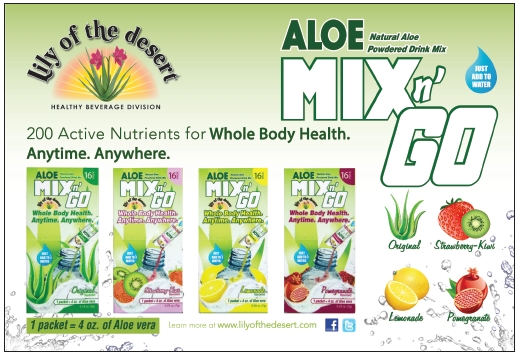 Sugarek MacDonald says that methyl donors are needed to neutralize homocysteine, and these include vitamins B6, folic acid and B12. “It is well known that these three B vitamins in tandem are required to act as cofactors in the homocysteine cycle and help maintain lower levels of homocysteine, thereby supporting optimal heart health,” she says, adding that trimethylglycine (TMG) is also an important factor in dealing with homocysteine.
Sugarek MacDonald says that methyl donors are needed to neutralize homocysteine, and these include vitamins B6, folic acid and B12. “It is well known that these three B vitamins in tandem are required to act as cofactors in the homocysteine cycle and help maintain lower levels of homocysteine, thereby supporting optimal heart health,” she says, adding that trimethylglycine (TMG) is also an important factor in dealing with homocysteine.
Vitamin C, Levin notes, is necessary to combat arterial plaque. Researchers have generated arterial plaque in animals that normally don’t produce plaque by disabling their ability to manufacture vitamin C.
Market research group Frost & Sullivan recently released a study showing the cost savings associated with supporting heart health through nutrition. Nearly $4 billion in cumulative costs from coronary heart disease (CHD) treatment could be saved from 2013 to 2020 if all U.S. adults over the age of 55 diagnosed with CHD used omega-3 supplements at proper levels (12). “Similar cost savings analyses were applied to other heart health ingredients, such as B vitamins, phytosterols, psyllium and chromium picolinate, and the results were similarly impressive,” says Wright, adding, “Can you imagine the relief we could offer the healthcare system if consumers realized that the standard of heart care doesn’t just revolve around drugs and expensive medical procedures?”
Circulation is Fundamental
Going back to the government statistics cited in our introduction, it is worth noting that cerebrovascular disease (of which stroke is a result) also rates very highly among leading causes of death (1). In addition to its central role in cardiovascular health, circulatory function is crucial in preventing these conditions in the brain and is fundamental to the health of all our bodily systems. Compromised circulation can cut off supplies of oxygen and nutrients to organs and tissues throughout the body, Levy explains. The following information on how certain nutrients are especially helpful for circulation may help you guide customers facing these issues.
A branded ingredient extracted from French 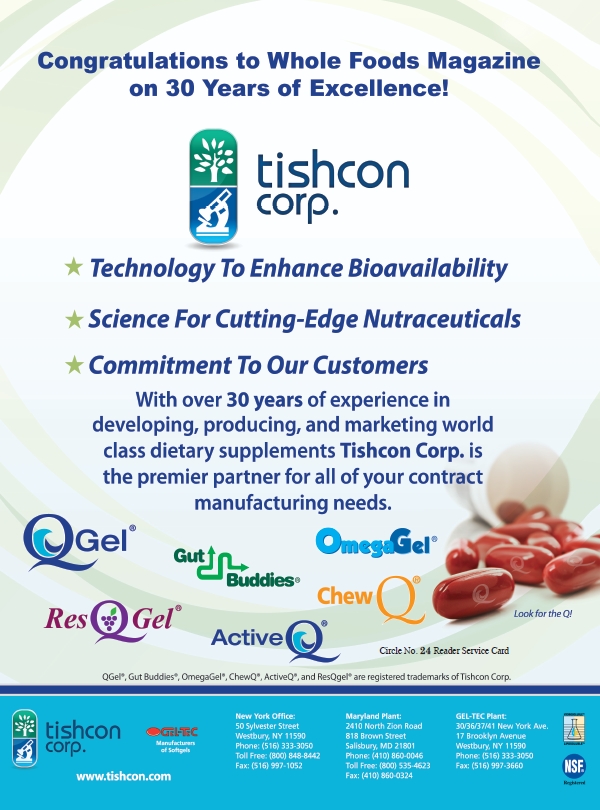 maritime pine bark (Pycnogenol) may contribute to the normalization of blood pressure and platelet function, as well as improve lipid profiles and blood sugar, according to Sebastien Bornet, director of global marketing for Horphag Research (worldwide exclusive supplier of Pycnogenol), Hoboken, NJ. It has been investigated in healthy people and those with borderline high risk factors, and also as an adjunct to prescription drug treatments for cardiovascular issues.
maritime pine bark (Pycnogenol) may contribute to the normalization of blood pressure and platelet function, as well as improve lipid profiles and blood sugar, according to Sebastien Bornet, director of global marketing for Horphag Research (worldwide exclusive supplier of Pycnogenol), Hoboken, NJ. It has been investigated in healthy people and those with borderline high risk factors, and also as an adjunct to prescription drug treatments for cardiovascular issues.
Bornet explains that endothelial cells serve as “traffic cops” for blood flow, ensuring it is directed to appropriate areas of the body including the heart. “If endothelial cells are not functioning properly, coronary arteries become narrowed or blocked, causing plaque build-up and preventing oxygen-rich blood from reaching the heart muscle, which often leads to a heart attack,” he says. One recent study found Pycnogenol helped maintain endothelial function (13). The randomized, double-blind, placebo-controlled study found the ingredient increased artery dilation by 32% in coronary artery disease patients, as well as reduced plasma levels of endothelin-1, a sign of improved endothelial function.
Bornet also refers to findings on Pycnogenol’s ability to help prevent thrombosis, or blood clots, in passengers after long plane flights. “Of course, thrombus formation within the heart produces serious damage to the heart, making the prevention of thrombosis an important contribution to heart health,” he says. Much of the credit for these benefits can be attributed to improved microcirculation, down to the capillary level, thus enhancing blood flow, Bornet explains.
A separate study revealed a combination of Pycnogenol and CoQ10, as an adjunct to medical treatment, helped strengthen the hearts of stable heart failure patients (14). It increased the blood volume ejected with each heartbeat, Bornet says, meaning oxygen-rich blood supply to all organs improved and the patients became more energetic. “Furthermore, blood pressure, heart rate and respiratory rates were improved among patients,” he says.
CoQ10 is recognized in its own right for blood pressure support, says Hazels Mitmesser, and she also adds melatonin to the list of supplements that support healthy blood pressure levels already within a normal range.
 Few nutritional interventions aimed at improving circulation bring benefits quickly, with the possible exception of l-arginine, Levy says. It boosts the production of NO, a molecule that Sugarek MacDonald explains is essential to the body because it improves arterial wall elasticity and increases vasodilation, allowing for proper blood flow. To properly support endothelial function, Meletis explains that sufficient NO is required, along with androgens and NO substrates like citrulline and arginine.
Few nutritional interventions aimed at improving circulation bring benefits quickly, with the possible exception of l-arginine, Levy says. It boosts the production of NO, a molecule that Sugarek MacDonald explains is essential to the body because it improves arterial wall elasticity and increases vasodilation, allowing for proper blood flow. To properly support endothelial function, Meletis explains that sufficient NO is required, along with androgens and NO substrates like citrulline and arginine.
L-arginine may be the most tried and true ingredient for circulation, according to Sugarek MacDonald. The NO it produces initiates and maintains vasodilation through a cascade of biological events, she says, stating, “Within 30 minutes to one hour after arginine supplementation, NO gas is released in the blood by endothelial cells and diffuses into smooth muscle cells that line small blood vessels.” Once inside the cells, NO binds to enzymes and activates guanylate cyclase, which helps form cyclic guanosine monophosphate (cGMP). This then activates specific proteins, including myosin, causing vessels to relax and dilate.
She says these actions not only support healthy blood pressure, but can also help athletes and those with erectile dysfunction. In a recent study on sickle cell anemia patients, l-arginine supplementation was found to increase NO availability and to stem heart rate responses due to posture changes (15).
Levy says that other nutrients can improve blood pressure over a short period of time, including nattokinase and aged garlic extract (AGE). Like l-arginine, AGE stimulates the production of intracellular NO, and can help improve vascular and circulatory health via multiple pathways, according to Levy. “Studies show that it reduces blood pressure, cholesterol and platelet aggregation and adhesion while stimulating NO production in endothelial cells,” he says. Australian researchers have verified AGE’s ability to reduce blood pressure in a matter of weeks. Levy explains that 12 weeks of 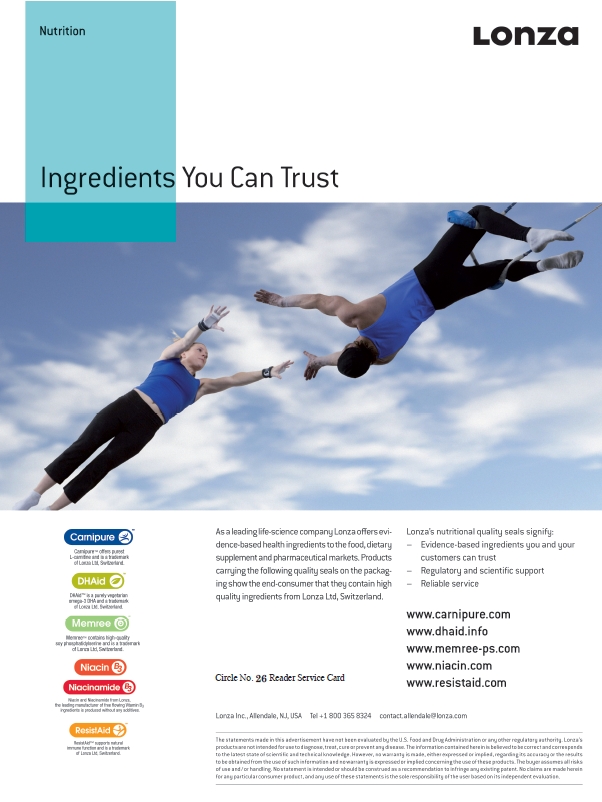 supplementation reduced systolic blood pressure in subjects with uncontrolled hypertension (140 mmHg or higher) by an average of 10.2 mmHg compared to placebo (16).
supplementation reduced systolic blood pressure in subjects with uncontrolled hypertension (140 mmHg or higher) by an average of 10.2 mmHg compared to placebo (16).
Superfruits and standardized extracts of superfruits like grape seed extract can be helpful in prevention, says Vladimir Badmaev, M.D., Ph.D., head of R&D at NattoPharma ASA, Oslo, Norway. He says vitamin K2 is also helpful in regulating blood pressure, most likely due to reductions in inflammatory markers like TNF-alpha, interleukin IL-6, C-reactive protein and blood sugar.
Gene Bruno, M.S., M.H.S., director of category management for Twinlab Corporation, New York, NY, points to human clinical research into grape seed extract’s effect on blood pressure. Subjects with metabolic syndrome wore an ambulatory monitoring device at the start of the trial and at its end to record their blood pressure. The study found that grape seed extract lowered both systolic and diastolic blood pressure relative to placebo (17).
“Human clinical research also demonstrates that magnesium oxide supports healthy blood pressure levels already in the normal range,” says Bruno, referring to an older study on hypertensive subjects (18).
Minerals including potassium, magnesium and calcium are needed to gate ions and cations, a component of blood pressure regulation, says Sugarek MacDonald.
The amino acid taurine, she adds, supports healthy blood pressure levels in a related manner. It is conditionally essential to the body, meaning that the body can synthesize it if there are sufficient amounts of B vitamins and amino acids available. At the cellular level, she says that taurine keeps potassium and magnesium inside cells while blocking out excess sodium.
In opposition to calcium’s tightening of muscles, magnesium relaxes smooth muscles in blood vessels, Dean says. “It acts as a natural diuretic if there is too much fluid retention. When magnesium enters cells, it brings fluid with it for proper hydration of those cells, and it acts as a mild and natural blood thinner that keeps blood from becoming too thick,” she says.
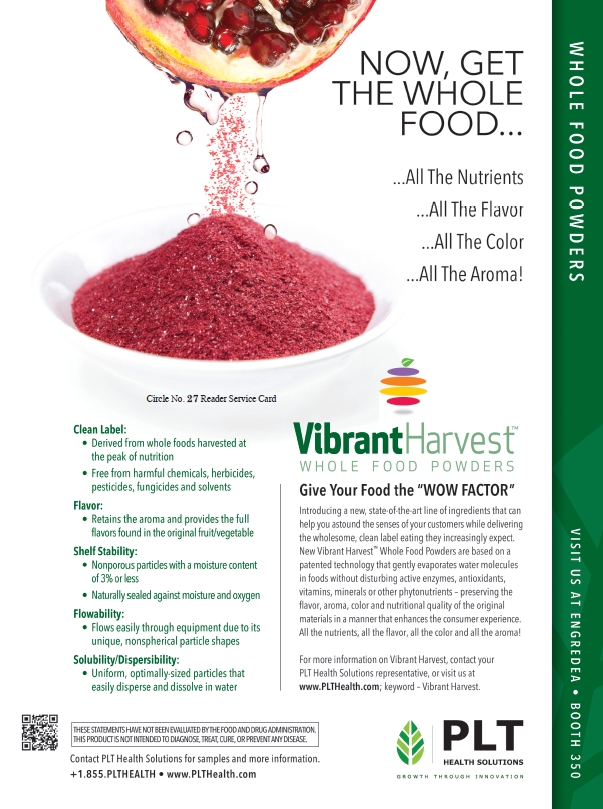 Vitamins C and D, as well as balanced EPA/DHA omega-3 supplements, also support healthy blood flow, Sugarek MacDonald adds. Wright notes that the EPA in krill oil has been shown to help decrease carotid artery thickness and improve blood flow. Omega-3s induce the production of local hormones in arterial smooth muscle, causing relaxation, Joiner-Bey explains. They also reduce the stickiness of platelets, reducing blood clotting that can lead to heart attacks and strokes, he adds.
Vitamins C and D, as well as balanced EPA/DHA omega-3 supplements, also support healthy blood flow, Sugarek MacDonald adds. Wright notes that the EPA in krill oil has been shown to help decrease carotid artery thickness and improve blood flow. Omega-3s induce the production of local hormones in arterial smooth muscle, causing relaxation, Joiner-Bey explains. They also reduce the stickiness of platelets, reducing blood clotting that can lead to heart attacks and strokes, he adds.
The proprietary vitamin E ingredient discussed earlier is thought to improve circulation by increasing arterial compliance, according to See (specifically, it has been found to increase measures including the augmentation index and carotid femoral pulse wave velocity).
He adds that it may also improve circulation to areas affected by cell or neuron apoptosis, or cell death. In fact, in an NIH-funded study, the vitamin E ingredient was found to promote circulation in a canine stroke model. Specifically, this involves the formation of new arteries in the infarction area of stroke. The researchers are currently conducting a human clinical trial to look at potential benefits for stroke and injuries resulting from stroke, See says.
Olive leaf, according to Joiner-Bey, can help dilate blood vessels, and flaxseed lignans can help reduce the accumulation of atherosclerotic plaque on artery walls and support healthy blood pressure.
Badmaev believes that circulation, though affected by lifestyle factors like exercise, should be addressed first through nutrition. What we eat and how our food is processed play primary and often negative roles. “Food technology and processed foods are indispensable to modern nutrition; however, it is increasingly apparent that the technology and ingredients used may pose major health risks contributing to cardiovascular disease, obesity and type 2 diabetes,” Badmaev says.
For instance, he says, evidence shows our current consumption rates of sodium are a major factor in increased blood pressure. As a risk factor, blood pressure accounts for 62% of strokes and 49% of coronary heart disease, and risk starts accumulating at a systolic blood pressure of 115 mmHg, according to Badmaev. Trans-fat in our food is another example, he says; while it may contribute to its taste, it is proven to cause cardiovascular disease (luckily, due to an imminent FDA ban, trans-fat’s days seem to be numbered in the United States).
Badmaev also asserts that supplements for blood pressure 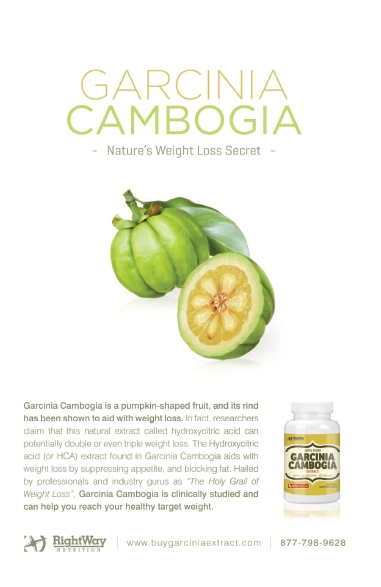 should be looked at as preventive measures, rather than interventions, which should be reserved for pharmaceuticals. The new focus on “pre-hypertension” means that even those with normal blood pressure at younger ages should be monitoring it regularly. According to statistical data, says Badmaev, nine in 10 people who currently have normal blood pressure will develop high blood pressure by age 65.
should be looked at as preventive measures, rather than interventions, which should be reserved for pharmaceuticals. The new focus on “pre-hypertension” means that even those with normal blood pressure at younger ages should be monitoring it regularly. According to statistical data, says Badmaev, nine in 10 people who currently have normal blood pressure will develop high blood pressure by age 65.
Speaking of circulatory health as a concept, Israel observes, “This is a huge untapped market, and really a fabulous opportunity for our industry.” It is an issue that can manifest in many ways for different people; from spider veins on legs, to vision problems, sexual dysfunction or restless leg syndrome, Israel says all are circulatory issues. He sees an emerging awareness among consumers and marketers on circulation, namely, that other types of nutritional support may be for naught if underlying circulatory issues are left unaddressed.
New Guidelines, Same Story?
The American Heart Association and the American College of Cardiology recently updated the guidelines doctors use to decide who should receive cholesterol-lowering statin drugs. The new risk-assessment formula is available to the public online. While the new guidelines decrease the emphasis on getting LDL cholesterol numbers below specific levels, the addition of strokes as a risk factor and other changes may mean more people will be put on statins. “These types of guidelines tend to give prominence to drug therapies instead of proper lifestyle choices, including nutrition,” says Levin.
Regular monitoring of serum levels of basic nutrients, especially ones modern diets often lack like magnesium, are not sufficiently factored into these medical guidelines, Levin says. He goes on to note that certain citrus extracts can address cholesterol production in the liver, and do so in ways that are well-tolerated by individuals who suffer side effects from taking statins. This indicates a different mechanism of action is in play, he says.
Sugarek MacDonald emphasizes the well-known potential consequences of statin use, such as inhibited CoQ10 and vitamin D synthesis. Statins inhibit HMG CoA reductase, and while this helps slow down cholesterol synthesis, it can also block the production of these vital nutrients. Vitamin D is synthesized from cholesterol, and she says that long-term statin use has been associated with low vitamin D levels in blood plasma.
Because of these adverse impacts, an increase in the number of statin users is concerning to Root. CoQ10 performs a critical role in the formation of ATP, our basic source of energy. Root therefore encourages those that must take statins to strongly consider supplementing with CoQ10.
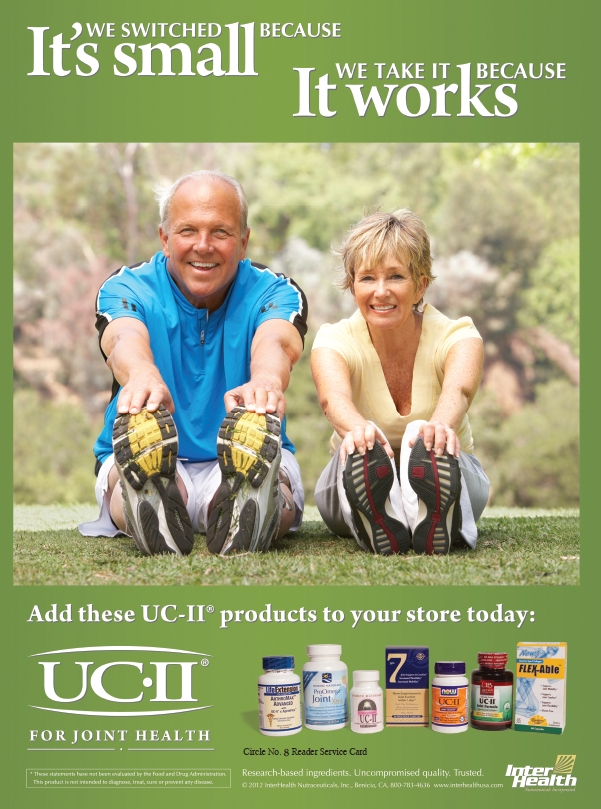 While she thinks statins have helped improve public awareness of high cholesterol and its association with heart disease, Sugarek MacDonald feels it’s important to note that many common medicines of today have their roots in nature. For this reason, it is not surprising that research supports natural options like red yeast rice for cholesterol support. She says that because red yeast rice contains the naturally occurring compound monacolin K, it is able to inhibit HMG CoA reductase in a manner similar to statins and thereby support healthy cholesterol levels.
While she thinks statins have helped improve public awareness of high cholesterol and its association with heart disease, Sugarek MacDonald feels it’s important to note that many common medicines of today have their roots in nature. For this reason, it is not surprising that research supports natural options like red yeast rice for cholesterol support. She says that because red yeast rice contains the naturally occurring compound monacolin K, it is able to inhibit HMG CoA reductase in a manner similar to statins and thereby support healthy cholesterol levels.
Research has also documented vitamin E benefits for cholesterol levels, according to See. He explains that while statins inhibit HMG CoA reductase, tocotrienols affect cholesterol production in the liver through a different mechanism, namely proteolytic degradation of HMG CoA reductase. A synergy between statins and vitamin E is therefore possible, says See, as they both target the same enzyme in different ways.
Though the new guidelines come packaged with recommendations on the importance of lifestyle factors for heart health, the current paradigm still risks leaving much out of the picture. “It is known that as the size of cholesterol particles decreases, the cardiovascular risks increase. Normal cholesterol results aren’t necessarily reliable measures of risk,” says Holtby. He adds that tests are now available to screen a broader spectrum of risk factors, including tests for a small, dense form of LDL that creates cardiovascular issues.
Women and Heart Health
The notion that heart disease disproportionately afflicts men can itself be a detriment to women. And once women's heart health is brought into focus, it remains to determine what special issues they might face. “With regards to heart health, researchers are beginning to understand that males and females are physiologically different with unique nutritional needs,” says Hazels Mitmesser.
There are some risk factors for heart health that relate specifically to women, Holtby says. One is when relatively high levels of testosterone are present prior to menopause. Another is the potential for heightened blood pressure during menopause. Holtby also notes that autoimmune conditions like rheumatoid arthritis tend to be more common in women than men, and these conditions are risk factors for heart disease. Finally, he believes that low risk factor awareness on the part of women can be considered a risk factor in itself.
“There is a huge misconception that heart 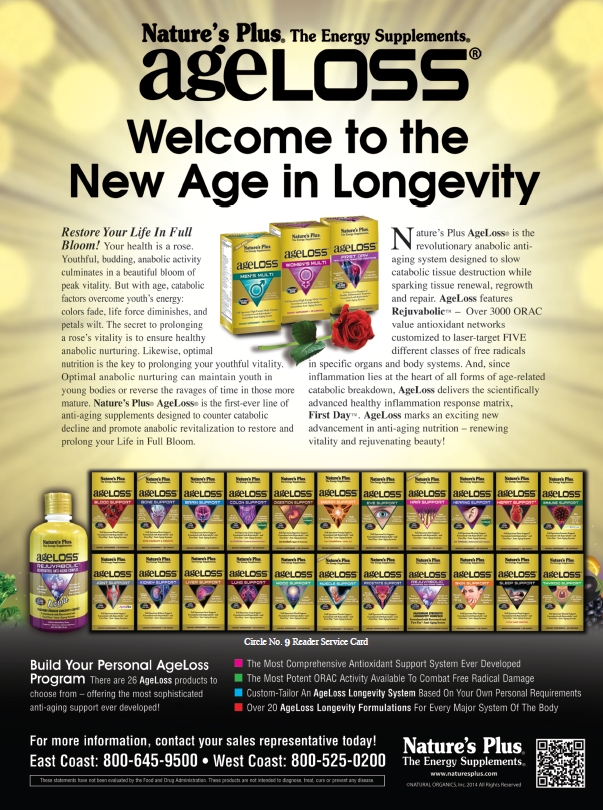 disease affects mostly men. In reality, heart disease is the leading cause of death for women in the United States,” says Wright. Women’s hearts and arteries are smaller than men’s, she says, and it is believed that women have a different heart rhythm. She says it is also important to note that women may display different symptoms of heart disease than men, and that they are therefore easily misdiagnosed. Women have a higher chance of dying during heart surgery than men, Levy adds, saying that some surgeons hypothesize this may be related to some fundamental difference in the way women’s hearts function.
disease affects mostly men. In reality, heart disease is the leading cause of death for women in the United States,” says Wright. Women’s hearts and arteries are smaller than men’s, she says, and it is believed that women have a different heart rhythm. She says it is also important to note that women may display different symptoms of heart disease than men, and that they are therefore easily misdiagnosed. Women have a higher chance of dying during heart surgery than men, Levy adds, saying that some surgeons hypothesize this may be related to some fundamental difference in the way women’s hearts function.
Women still going through a menstrual cycle lose iron each month until menopause sets in. Men obviously do not undergo this same process, and due to higher testosterone levels, man actually tend to have higher levels of iron-containing red blood cells to support muscle mass, according to Meletis. These higher iron levels put men at a higher risk for LDL oxidation. Once they reach menopause, women's heart risk increases due to the increased oxidative damage, he says.
“Women seem to be protected before menopause by the female hormones that are abundant during reproductive years. After menopause, cardiovascular risk for women rises to the level of men. However, obesity erodes the protection younger women would otherwise enjoy,” says Joiner-Bey.
One recent study discovered a difference in the way omega-3s benefit heart health in men and women, according to Bruno. Omega-3 EPA was found to inhibit platelet aggregation more dramatically in men, while DHA was found to have greater value for women (17).
Unfortunately, medical research has often excluded women as study subjects in the past, Joiner-Bey says. Only recent decades have seen women included equally with men. Exacerbating the heart health risk for women is their frequent role as caregiver for others. Joiner-Bey believes that many women neglect their own health issues until it is too late. Retailers as well as manufacturers can counteract this, he says, by offering public education seminars on women’s health.
Levy also sees an educational opportunity. “Since the primary demographic for health-related literature is women, informative articles, newsletters, booklets, social media, and other targeted educational avenues are an excellent way to reach this specific audience,” he says. WF
|
Select Heart Health Products and Ingredients |
|
|
American Health, Inc.: More Than a Multiple with Cardio Essentials. American River Nutrition: DeltaGold tocopherol-free vitamin E. A.C. Grace Company: Unique Omega E+, Unique E Mixed Tocopherols Concentrate, Unique E Tocotrienols, Unique Omega Krill Oil. Aker BioMarine Antarctic US: Superba Krill. Barlean's: Organic Flaxseed Oil, Fresh Catch Fish Oils, Wild & Whole Krill Oil, Wild & Whole Alaskan Salmon Oil, Omega Swirls, Olive Leaf Complex, Forti-Flax, Brevail (Lignan Concentrate), organic Chia Seed. Bluebonnet Nutrition Corp.: CholesteRice Red Yeast Rice Vcaps, Niacin (Flush producing) 100 mg Vcaps, Plant Sterols 600 mg Vcaps, Policosanol Vcaps, Red Yeast Rice 600 mg Vcaps, Cellular Active Ubiquinol 25, 50, 100 and 200 mg Softgels, Heart Antioxidant Formula Vcaps, Taurine 1000 mg Vcaps, L-Arginine 500 mg Vcaps, Vitamin B6, B12 & Folic Acid Chewable Tablets, EPAX Omega-3 Heart Formula Softgels. Carlson Laboratories: HeartBeat Elite, Coenzyme Q-10, Super Omega-3 Gems, Elite Omega-3 Gems, The Very Finest Fish Oil. Carotech Inc.: Tocomin SupraBio. Horphag Research: Pycnogenol. Nattopharma USA Inc.: MenaQ7 vitamin K2. Natural Vitality: Natural Calm, Natural Calm Plus Calcium, Organic Life Vitamins. Neptune Technologies & Bioressources Inc.: Neptune Krill Oil (NKO). |
NOW Foods: Clinical Strength Cholesterol Pro, ßeta-Sitosterol Plant Sterols, Blood Pressure Health, Advanced Gamma E Complex, AlphaSorb-C, Arginine-Citrulline, Nattokinase, Vein Supreme, Red Omega, Ultra Omega-3. OptiPure: Gbe 24/6, Ginkgo Complete Liquid, Viscerol AI. Robinson Pharma: Contract manufacturer, custom omega formulas. Soft Gel Technologies, Inc.: CoQsol, CoQsol-CF, Sytrinol, EZ Mega 3. Solgar Vitamin and Herb: Wild Alaskan Full Spectrum Omega Softgels, Megasorb CoQ-10 Softgels, Vegetarian CoQ-10 Formulas, Ubiquinol (Reduced CoQ-10) Softgels, Ester-C Plus, B-Complex “50” and “100” Formulas, B-Complex with Vitamin C Stress Formula Tablets, Melatonin Formulas. Trace Minerals Research: ConcenTrace Trace Mineral Drops, Ionic Magnesium, Mega Mag, Liquid Magnesium, Stress-X Magnesium Powder, Ionic Tonic, Optimal pH, Greens Pak, Acai Juice, Ultra Mangosteen Juice. Twinlab Corp.: Blood Pressure Success, Cholesterol Success, Omega-3 Cardio Krill, CoQ10 dots. Wakunaga of America Co., Ltd.: Aged Garlic Extract Formula 100: Cardiovascular, Kyolic Formula 104: Cholesterol, Kyolic Formula 106: Circulation, Kyolic Formula 107: Phytosterols Cholesterol Support, Kyolic Formula 108: Total Heart Health, Kyolic Formula 109: Blood Pressure Health, Kyolic Formula 110: CoQ10, Kyolic Red Yeast Rice Plus CoQ10, Kyolic Omega 3, Kyolic One-Per-Day Cardiovascular, Kyolic Reserve, Kyolic Cardio-Logic, ModuChol. |
References
1. D.L. Hoyert, J.Q. Xu, “Deaths: Preliminary data for 2011,” National Vital Statistics Reports 61(6), (2012), http://www.cdc.gov/nchs/data/nvsr/nvsr61/nvsr61_06.pdf, accessed Dec. 27, 2013.
2. S.E. Chiuve, et al. “Plasma and dietary magnesium and risk of sudden cardiac death in women,” Am. J. Clin. Nutr. 93(2), 253-60 (2011).
3. J.Y. Kim, et al., “Effects of Nattokinase on Blood Pressure: A Randomized, Controlled Trial,” Hypertension Research 31, 1583-1588 (2008).
4. .M .Geleijnse, et al., “Dietary Intake of Menaquinone is Associated with a Reduced Risk of Coronary Heart Disease: the Rotterdam Study,” J. Nutr. 134(11), 3100-5 (2004).
5. R. Caluwé, “Vitamin K2 Supplementation in Haemodialysis Patients: A Randomized Dose-finding Study,” Nephrol. Dial. Transplant. Epub. ahead of print Nov. 26, 2013.
6. E. Theuwissen, et al., “Vitamin K status in healthy volunteers,” Food Funct., Epub. ahead of print Nov. 18, 2013.
7. K.C. Maki, et al., “Lipid effects of a dietary supplement softgel capsule containing plant sterols/stanols in primary hypercholesterolemia,” Nutrition. 29(1), 96-100 (2013).
8. Q. Sun, et al., “Vitamin D Intake and Risk of Cardiovascular Disease in US Men and Women,” Am. J. Clin. Nutr. 94(2), 534-42 (2011).
9. K. Berge, et al., “Krill Oil Supplementation Lowers Serum Triglycerides without Increasing Low-density Lipoprotein Cholesterol in Adults with Borderline High or High Triglyceride Levels,” Nutr. Res. Epub. ahead of print Dec. 18, 2013.
10. “Significant Health Care Cost Savings Attainable through the Use of Dietary Supplements,” Frost & Sullivan, Sept. 24, 2013, http://www.frost.com/prod/servlet/press-release.pag?docid=285168730, accessed Dec. 30, 2013.
11. F. Enseleit, et al., “Effects of Pycnogenol on Endothelial Function in Patients with Stable Coronary Artery Disease: a Double-blind, Randomized, Placebo-controlled, Cross-over Study,” Eur. Heart J. 33(13), 1589-1597 (2012).
12. G. Belcaro, et al., “Investigation of Pycnogenol in combination with coenzymeQ10 in heart failure patients (NYHA II/III),” Panminerva Med. 52(2 Suppl 1), 21-5 (2010).
13. S.I. Ogungbemi, et al., “L-arginine Increases Nitric Oxide and Attenuates Pressor and Heart Rate Responses to Change in Posture in Sickle Cell Anemia Subjects,” Niger. J. Physiol. Sci. 28(1), 45-50 (2013).
14. K. Ried, O.R. Frank, N.P. Stocks, “Aged Garlic Extract Lowers Blood Pressure in Patients with Treated but Uncontrolled Hypertension: A Randomised Controlled Trial,” Maturitas. 67(2), 144-50 (2010).
15. B. Sivaprakasapillai, et al., “Effect of Grape Seed Extract on Blood Pressure in Subjects with the Metabolic Syndrome,” Metabolism. 58(12), 1743-6 (2009).
16. Y. Kawano, et al., “Effects of Magnesium Supplementation in Hypertensive Patients: Assessment by Office, Home, and Ambulatory Blood Pressures,” Hypertension. 32, 260-265 (1998).
17. M. Phang, et al., “Gender-specific inhibition of platelet aggregation following omega-3 fatty acid supplementation,” Nutr. Metab. Cardiovasc. Dis. 22(2), 109-14 (2012).
Published in WholeFoods Magazine, February 2014


